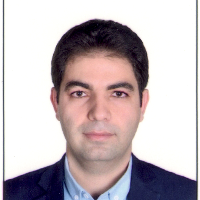Evaluation of Similarity Measures for Template Matching
Image matching is a critical process in various photogrammetry, computer vision and remote sensing applications such as image registration, 3D model reconstruction, change detection, image fusion, pattern recognition, autonomous navigation, and digital elevation model (DEM) generation and orientation. The primary goal of the image matching process is to establish the correspondence between two images of the same scene (i.e., the reference and input images). Image matching methods are generally classified as feature-based matching and template matching.
Feature-based methods extract image features (points, lines, regions) and attempt to establish the correspondence between these features. Template matching methods, also known as area-based methods, are generally defined as the process of finding a template in an image, based on a similarity measure such as cross-correlation and mutual information. Identical image windows of predefined size are applied for the computation of correspondence. Similarity measures play an essential role in the quality of template matching in photogrammetry, remote sensing, and computer vision. Various similarity measures have been proposed in the literature. Each similarity measure has its strengths and weaknesses.
In this paper, the capability of some well-known similarity measures for matching of various close range and satellite images with diverse geometric and radiometric differences are evaluated. Also, to increase the template matching stability against geometric and radiometric variations, a novel weighting approach for computing of similarity measures has been introduced. The proposed approach is based on three weight factor that are computed using gradient and Gaussian functions. By applying this weighting approach for cross correlation similarity measure, a novel measure named Weighted Cross-Correlation (WCC) has been presented.
Ten algorithms, including SSD (Sum of Squared Differences), LSSSD (Locally Scaled Sum of Squared Differences), NSSD (Normalized Sum of Squared Differences), JF (Jeffrey Divergence), Tanimoto, ISD (Incremental Sign Distance), IRV (Intensity-Ratio Variance), CC (Cross-Correlation), MI (Mutual Information) and WCC are considered for evaluation.
To evaluate the capability of various similarity measures, a number of template-matching experiments were applied. Several synthetic and real images for different geometric and radiometric variations including, scale, rotation, viewpoint, blur, and illumination changes are used as data set. The similarity measures are evaluated using three evaluation criteria, including success rate, positional accuracy, and computation time. The experimental results indicate that the proposed WCC method outperforms the other similarity measures for all images and all types of transformations. Based on the evaluation results, the WCC method can be applied to the reliable template matching for a variety of photogrammetric and remote sensing applications. Generally, after the WCC, better results, on average, were obtained by the NSSD, LSSSD, and CC measures in most cases. For illumination variations, MI and ISD methods provide the best results. The fastest method is the IRV and the slowest method is MI. Evaluation of the performance of the various similarity measures for other applications such as dense matching process is suggested as future work.
-
Providing an Integrated Descriptor Based on Spatial and Geometric Properties for Three-Dimensional Point Cloud Matching
Shokoufeh Farhadi, Nazila Mohammadi *,
Journal of of Geographical Data (SEPEHR),


